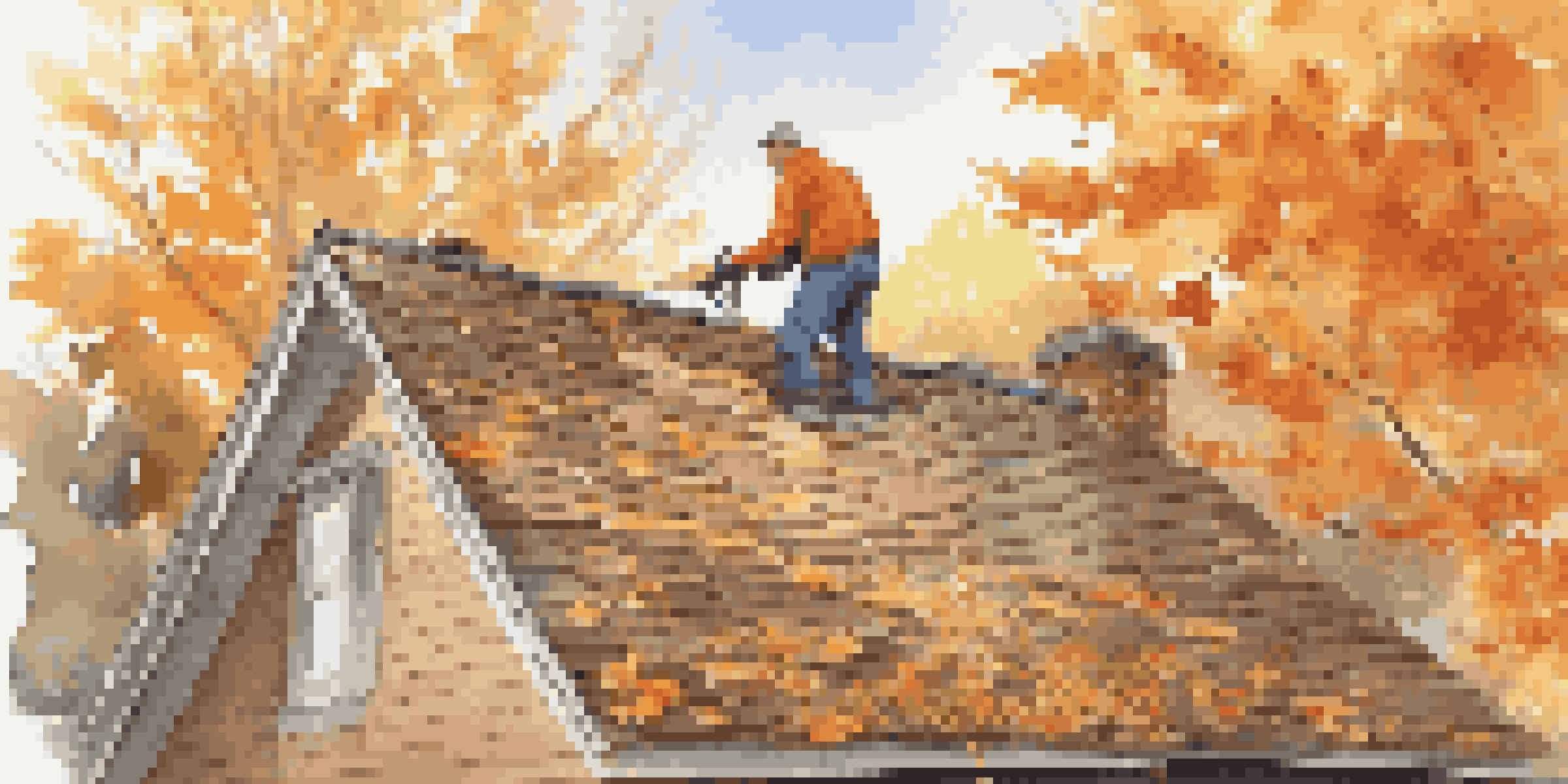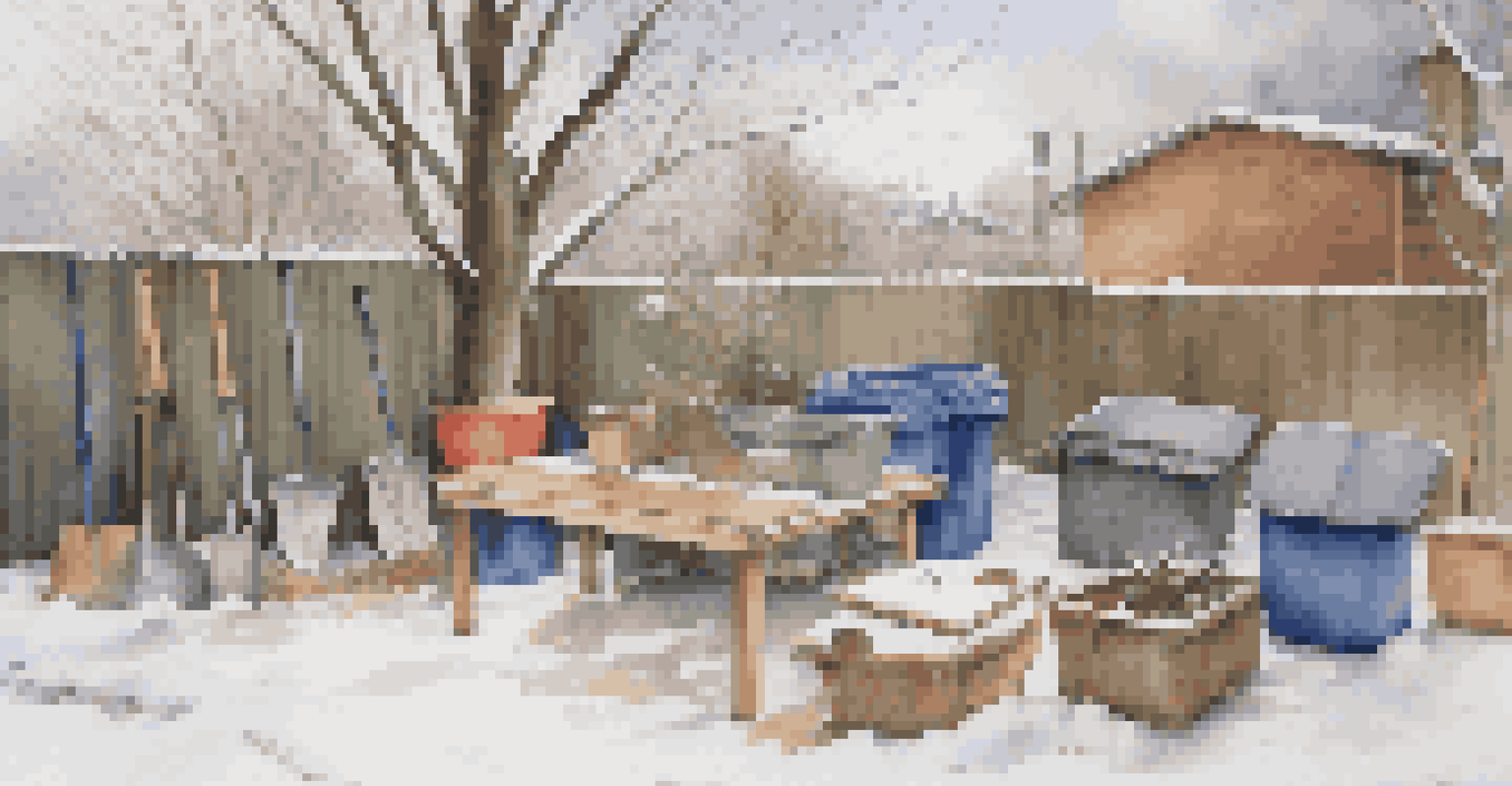Fall Maintenance: Protect Your Home from Winter Weather Damage

Inspect Your Roof for Damage Before Winter Hits
As the leaves begin to fall, it’s the perfect time to check your roof. Look for missing shingles, leaks, or any signs of wear that could worsen in winter. A small issue now can become a major problem under snow and ice.
An ounce of prevention is worth a pound of cure.
Consider hiring a professional if you’re not comfortable climbing up or if the damage is extensive. They can provide a thorough inspection and recommend repairs that will help your roof weather the harsh winter conditions.
By addressing these issues proactively, you'll not only protect your home but also save money in potential repairs later on. A sturdy roof is your first line of defense against winter weather.
Clean and Maintain Your Gutters to Prevent Ice Dams
Clogged gutters can lead to a host of problems, particularly during winter when snow and ice accumulate. Cleaning your gutters in the fall ensures that they can effectively direct water away from your home, preventing potential damage to your foundation and roof.

While you’re at it, check for any loose or damaged gutter sections that may need repair. A well-maintained gutter system allows for proper drainage, reducing the risk of ice dams that can cause water to back up under your shingles.
Inspect Roof for Winter Readiness
Checking for damage now can prevent costly repairs and protect your home during harsh winter conditions.
Taking the time to clean your gutters can save you from costly repairs and headaches during the winter months. Plus, it’s a good excuse to enjoy some fresh air before the snow blankets your yard!
Seal Windows and Doors to Keep the Cold Out
Drafty windows and doors can significantly increase your heating bills during winter. Inspect your home for gaps or cracks and consider applying weather stripping or caulk to seal any leaks. This small step can make a huge difference in your comfort and energy costs.
The best way to predict the future is to create it.
If your windows are particularly old, you might want to consider storm windows or even replacing them altogether. Newer windows are designed to be energy-efficient, keeping your home warmer and reducing energy consumption.
By ensuring your windows and doors are well-sealed, you create a cozy atmosphere indoors, even when the temperatures drop outside. Plus, it’s a great way to minimize your carbon footprint and save money.
Prepare Your Heating System for Cold Weather
Before the first frost hits, it’s crucial to ensure your heating system is in good working order. Schedule a maintenance check for your furnace or boiler to catch any potential issues early. A well-maintained system will keep your home warm and comfortable all winter long.
Don’t forget about your thermostat! Upgrading to a programmable thermostat can help you manage your heating costs more effectively and ensure your home is warm when you need it most.
Seal Windows to Save Energy
Sealing drafts around windows and doors can enhance comfort and reduce heating bills during the cold months.
Taking these steps not only enhances your comfort but also improves the efficiency of your heating system, potentially lowering your energy bills. A little preparation now can go a long way in keeping your home cozy.
Insulate Pipes to Prevent Freezing and Bursting
In the colder months, exposed pipes are at risk of freezing, which can lead to expensive bursts and significant water damage. Insulating these pipes, especially in unheated areas like basements and attics, can help prevent this issue.
Use foam pipe insulation, which is easy to install and effective at keeping your pipes warm. Don’t forget to also check for any drafts that could affect these areas, and seal them as necessary.
By taking the time to insulate your pipes, you’re not just protecting your plumbing; you're also providing peace of mind throughout the winter. A little preemptive action means you can enjoy the season without worrying about plumbing emergencies.
Store Garden Tools and Outdoor Furniture Properly
As fall comes to a close, it’s time to think about your outdoor items. Storing garden tools and furniture properly can extend their lifespan and keep your yard looking great come spring. Clean and dry your tools before putting them away to prevent rust and damage.
For outdoor furniture, consider investing in protective covers or storing them in a shed or garage. This will protect them from harsh weather and prolong their usability, ensuring they’re ready for use when warmer weather returns.
Review Insurance for Winter Risks
Understanding your home insurance coverage can save you from unexpected expenses due to winter-related damages.
Taking these steps not only protects your investments but also helps keep your outdoor space tidy during the winter months. A clutter-free yard will make your spring clean-up much easier!
Check Your Smoke and Carbon Monoxide Detectors
As you prepare your home for winter, don’t overlook the importance of safety. Fall is a great time to check your smoke and carbon monoxide detectors to ensure they are functioning properly. Replace the batteries and test each unit to make sure you and your family are safe.
Increased use of heating systems can lead to higher risks of carbon monoxide leaks, making it essential to have working detectors in place. If you don’t have detectors in key areas, such as bedrooms and hallways, consider installing them.

By ensuring your detectors are in good working order, you're taking a vital step in protecting your home and loved ones. Safety should always be a priority, especially during the winter months.
Review Your Home Insurance Policy for Winter Coverage
As winter approaches, it’s wise to review your home insurance policy. Make sure you understand what is covered in the event of winter-related damages, such as burst pipes or roof collapses due to heavy snow. Knowing your coverage details can save you from unexpected expenses.
If you find gaps in your coverage, consider discussing options with your insurance agent. They can help you find policies that offer better protection against winter hazards or recommend additional riders for your peace of mind.
Taking the time to review your insurance not only prepares you for potential issues but also provides reassurance. It’s better to be informed and prepared than to be caught off guard when winter arrives.